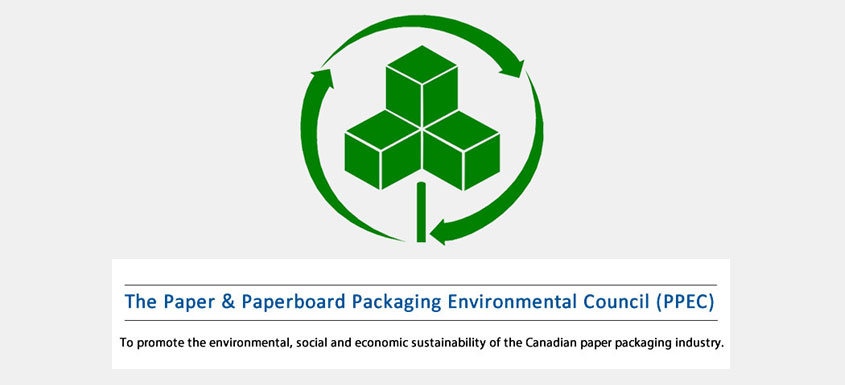Sustainable forest management is essential to the Canadian paper-based packaging industry and its circular economy.
And yet, misconceptions surrounding forestry and paper packaging persist when it comes to how paper packaging is made.
With today’s International Day of Forests, the Paper and Paperboard Packaging Environmental Council (PPEC) would like to clear up some of the misconceptions by providing the facts about what is actually harvested, the causes of deforestation, and how the major paper packaging grades are made in Canada.
FACT: The Canadian paper packaging industry does not harvest much of Canada’s forests (and what is harvested must be regenerated)
While most paper packaging made in Canada is produced with recycled content, the paper fibres it was originally made from came from a tree. However, the Canadian paper packaging industry doesn’t use much in the way of freshly cut trees, and the little that is harvested must be successfully regenerated by Canadian law.
According to the latest data from Natural Resources Canada’s State of Canada’s Forests Annual Report, in 2020, the total forest harvest (for lumber and all paper grades including packaging) represented 0.2% of Canada’s forest land, while 600 million seedlings were planted, up from 440 million in 2018.
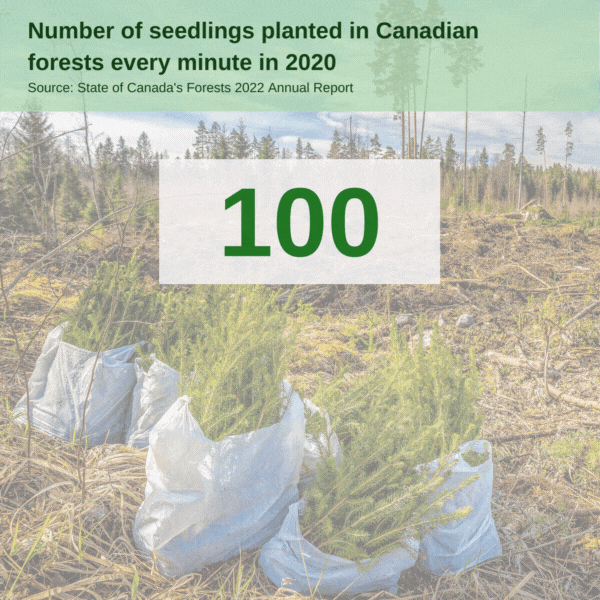
FACT: The paper packaging industry is not a major cause of deforestation in Canada
Deforestation is when forest land is permanently cleared and converted to make way for new, non-forest land use. And according to Canada’s National Deforestation Monitoring System, Canada’s 347 million hectares of forest area is stable, with less than half of 1% deforested since 1990.
In 2020, deforestation accounted for 49,352 hectares of area permanently changed, primarily by the agriculture, mining, oil and gas, and built-up (new homes, ski hills, and golf courses) sectors, which together represent 96% of deforestation in Canada.
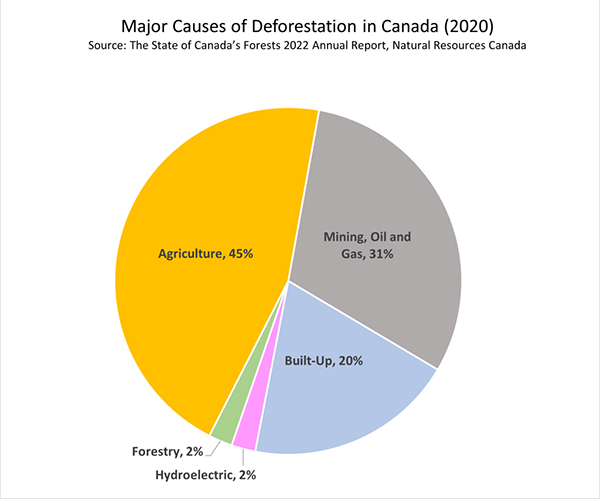
FACT: Insects are the number one cause of forests disturbances in Canada
Canadian forests are most affected by natural disturbances such as insect infestations, diseases, and fires.
In 2020, insects represented the largest cause of disturbance with 17.7 million hectares of area defoliated. The second largest cause was fires with 4.3 million hectares of area burned in 2021 (the largest on record since 1990).
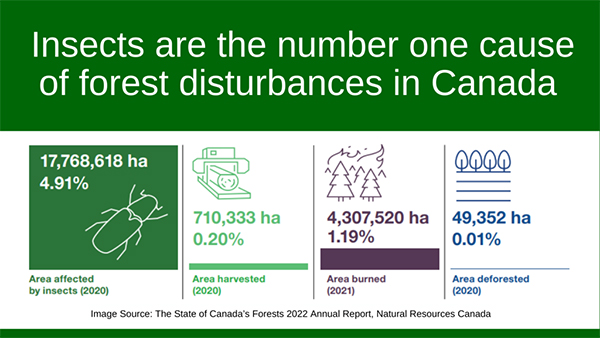
FACT: Most paper-based packaging products made in Canada are made from recycled content
Most domestic shipments of the three major paper packaging grades made in Canada – containerboard (used to make corrugated boxes), boxboard (used to make boxboard cartons), and kraft paper (used to make paper bags) – are made from recycled content (81.7%).
Mills also use sawmill residues – such as wood chips, shavings and sawdust left over from sawmill operations – and some supplement their pulp with virgin fibres from trees.
The mixture of using primarily recycled content, along with some new fibres from sustainably managed forests, is an important component to paper packaging’s circular economy.
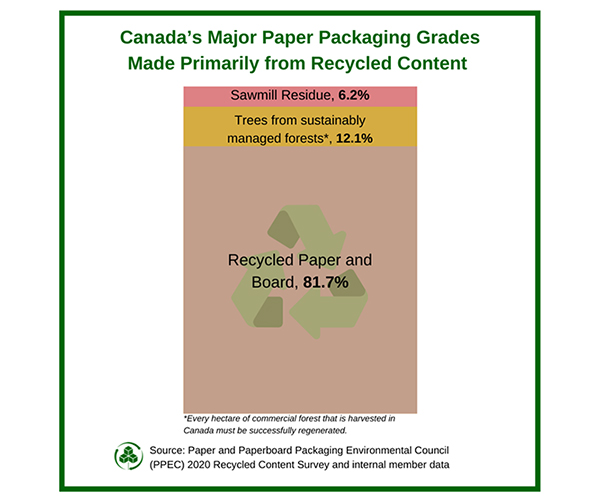
Existing research shows that paper can be recycled up to seven times, while corrugated box fibres can be recycled up to ten times, and we believe that number could be even higher in Canada given its recycling infrastructure and long-standing residential and business recycling programs. But over time, recycled fibres do weaken, which means a small amount of new virgin fibre needs to be introduced now and again.
It is through that important act of recycling that allows paper packaging to be continually collected so it can be reused and remade into new paper-based packaging products again and again.
FACT: Canadian mills use independent certification to verify their paper fibres are responsibly sourced
All paper fibres used are verified to be responsibly sourced by independent, third-party certification bodies. In Canada, there are three internationally recognized forest certification organizations: Sustainable Forestry Initiative (SFI), Forest Stewardship Council (FSC), and the Canadian Standards Association (CSA Z809). These organizations assess forestry operations against standards for sustainable forest management, and complements Canada’s rigorous forest management laws and regulations.
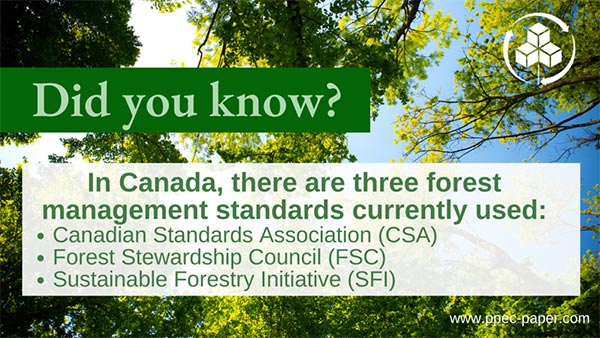
FACT: Paper packaging is made from a renewable resource that is sustainably managed, responsibly sourced, and actively recycled
On International Day of Forests, and every day, it is important to remember that Canada’s forests are stable and sustainably managed.
When we use and recycle paper-based packaging, we all play a part in protecting and replenishing our renewable resources, contributing to the sustainable management of Canada’s forests, and supporting the circular economy of the paper-based packaging industry.
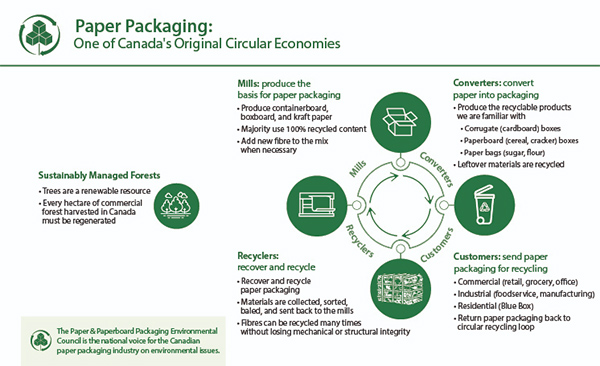
 Rachel Kagan
Rachel Kagan
Executive Director
The Paper & Paperboard Packaging Environmental Council (PPEC)



